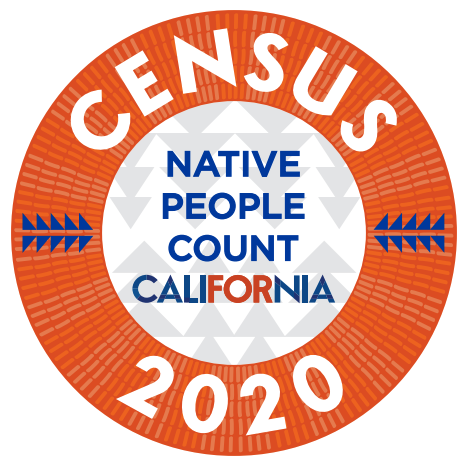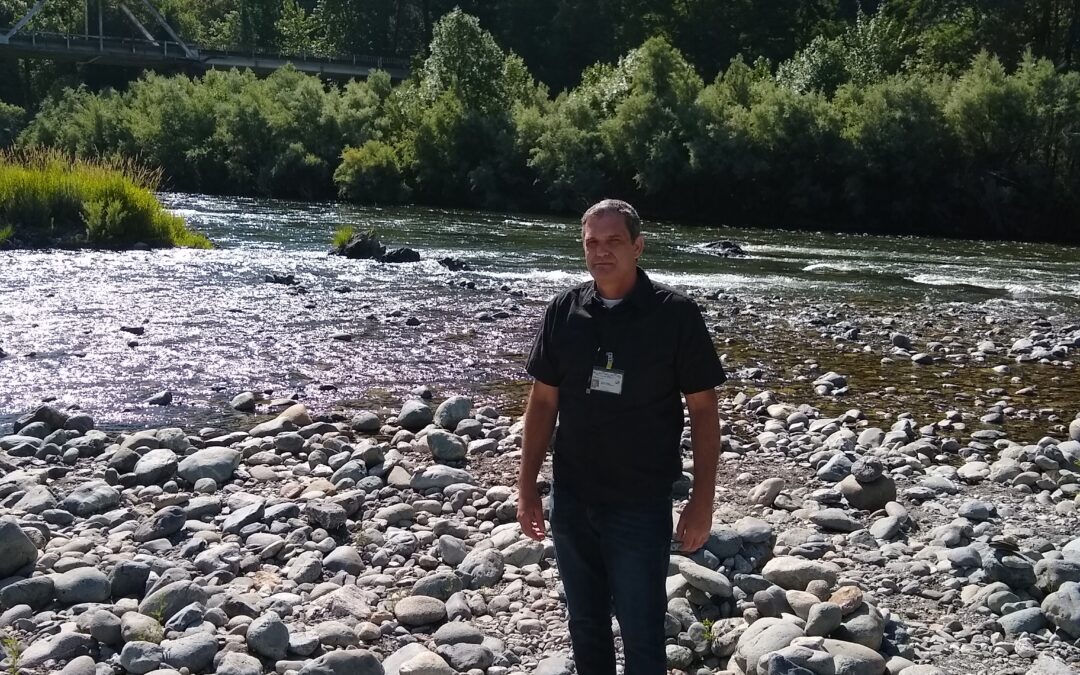Frank Snider, Karuk tribal citizen, is the Karuk 2020 Census Outreach Coordinator. (Courtesy of Frank Snider)
During the COVID-19 pandemic, the Karuk Tribe has relied on its deep sense of community in making sure its citizens are counted in the 2020 Census.
Located in the northwestern corner of California in Humboldt and Siskiyou counties, the Karuk Tribe is one of California’s largest tribal communities. It includes Happy Camp, Orleans and Yreka.
Frank Snider, 53, a Karuk tribal citizen, is the Karuk 2020 Census Outreach Coordinator. He is a Navy veteran and works with youth, elders, veterans and heads of households to provide an accurate count of tribal citizens in the 2020 Census.
“I do what I do because Karuk citizens need to be counted. We want a happier and healthier community for our people,” Snider said.
Josh Saxon, Executive Director of the Karuk Tribe and former tribal council member, said, “as a government, we have to provide basic government services for our people and a safety net for our more vulnerable people. We want an accurate count for people to make sure that formula funding for programs and services are accurately distributed so that we can continue to build our capacity, better serve our members and exercise our sovereignty.”
The Karuk Tribe runs its community health centers with Indian Health Service and Health Resources & Services Administration funding.
They serve both Native and non-Native people in the three remote communities they cover. “We are constantly looking for increased funding opportunities where we can boost our medical, dental and vision capacity,” Saxon said.
“We are also looking to supplement funding for safety net services, such as care for homeless people and services for those with low incomes,” Saxon said.
Economic development in Karuk is challenging.
“We have a number of issues attracting and retaining qualified workers because it’s tough to compete without increasing our local pay scale,” Saxon said.
The Karuk Tribe is the largest employer in the three communities. They have learned the hard way not to depend on boom or bust industries such as the timber industry. Saxon said the tribe needs to diversify its economic development.
Across Indian Country, many tribal citizens don’t want to be counted for historical reasons. Some believe that any increase in funding goes to state or regional governments and programs without any benefit to the tribe.
Snider said that one of his ways of communicating with tribal citizens is by explaining how the Census provides for the tribal community and not just for an individual.
“The most effective message is – ‘It’s about us. It’s for us,’” Snider said.
The idea of ‘togetherness’ resonates with the Karuk people, Snider said. “We are all in this together to help everybody.”
“This Census is an eye-opener for our youth since many of them were too young to remember the 2010 Census. Our youth can now participate in being counted in the Census. It’s an excellent opportunity for our youth to see how our funding and representation are fulfilled,” Snider said.
“Our veteran and elder communities are tight. They have a network. They watch out for each other. They’re also very straightforward – which is refreshing to get a blunt answer and clears out any ambiguities,” Snider said.
“I’m Generation X,” Saxon said. “By having our veteran and elder communities chime in with our youth as much as possible is a huge value. They understand the law, our history and remind us of some of our more difficult times we had to endure as a people to stay together. They help us inform our decision making,” Saxon added.
The COVID-19 pandemic has affected the Karuk Tribe like other communities across the country. The tribe has used imaginative ways to overcome isolation through social and physical distancing.
“We are fortunate to be part of the Intertribal Census Work Group. We brainstormed and came up with ways to involve the community and still be social. A great example of that is what our three communities, and the housing authority developed. They set up a drive-in movie theater event,” Snider said.
“For some of us, it was the first time seeing other community members for several months since the pandemic began. At the drive-in movie theater event, we were all in our vehicles, and they had figured out a way to pipe it into our FM radios. I can’t tell you know the amount of positive feedback we got. It highlighted how much we have been apart, and how good it is to see each other and wave and joke with each other across the parking lot. It was fantastic,” Saxon said.
During the drive-in, Snider said they put out six Census public service announcements through YouTube.
“It was a brilliant way of bringing the community together in a fun way, a positive way,” Snider said.
“Participation in the Census is key. We are always going to have challenges, but the harder you work at it, the more participation you’ll get. The more effort you put in, the more involved our elders, youth, and veterans will participate in the 2020 Census. Sometimes it takes an elder to bend the ear. That’s the wisdom we listen to as a community,” Snider said.
###
These interviews and articles are written on behalf of the Native People Count California campaign. For press inquiries or questions, please contact us via email at [email protected].
About NPCCA
Native People Count California is the official California complete count – Census 2020 tribal media outreach campaign. Launched in January 2020 – the Native People Count CA campaign is a collaboration between the Governor’s Office of the Tribal Advisor, the California Complete Count – Census 2020 office, and Tribal Media Outreach Partners NUNA Consulting Group, LLC, California Indian Manpower Consortium, Inc. (CIMC), and the California Native Vote Project (CANVP). Native People Count CA was created with the belief that the 2020 Census is an integral piece to upholding the fiduciary responsibility by the United States federal government to Tribes and its delegated authority to state and local governments.

